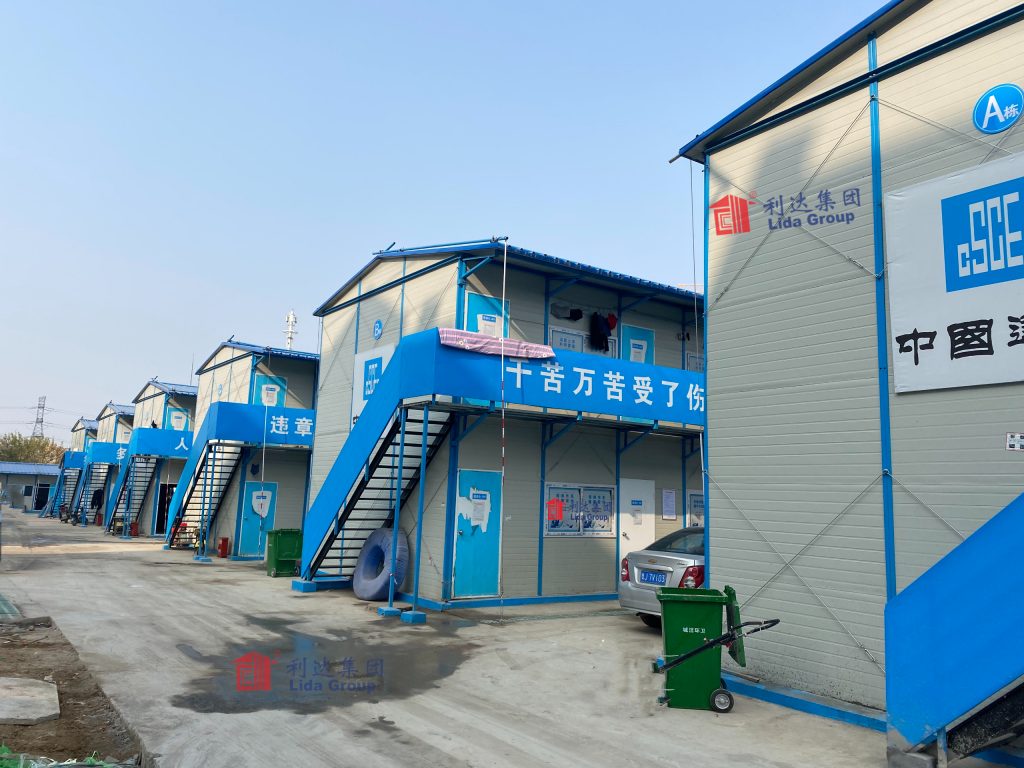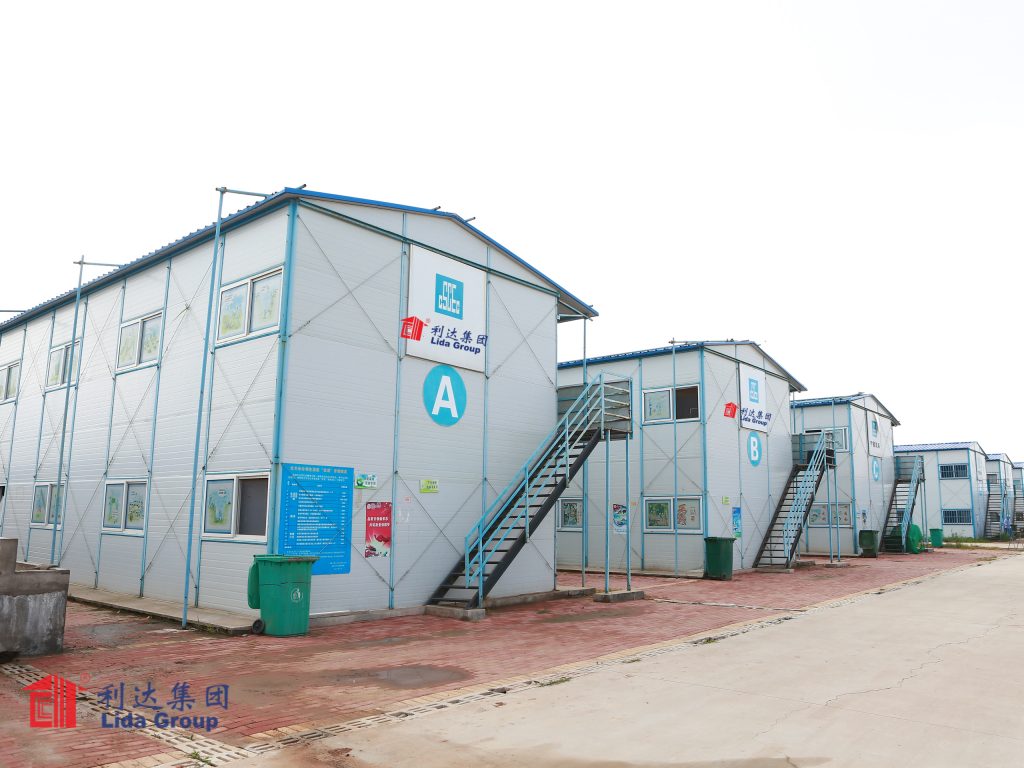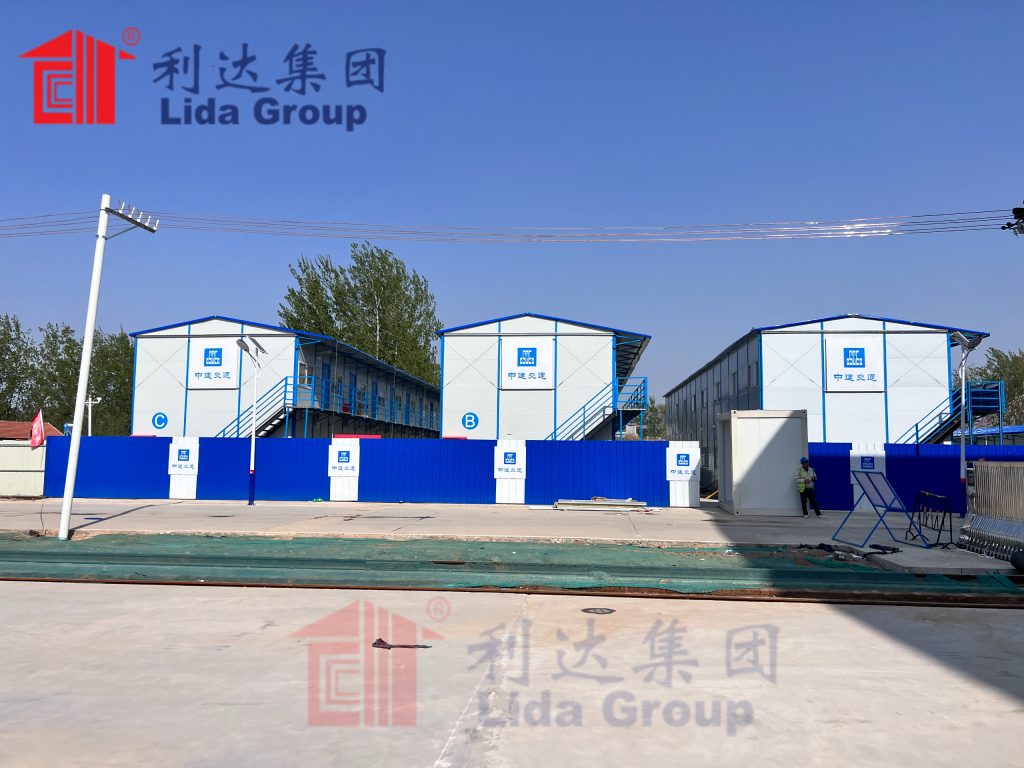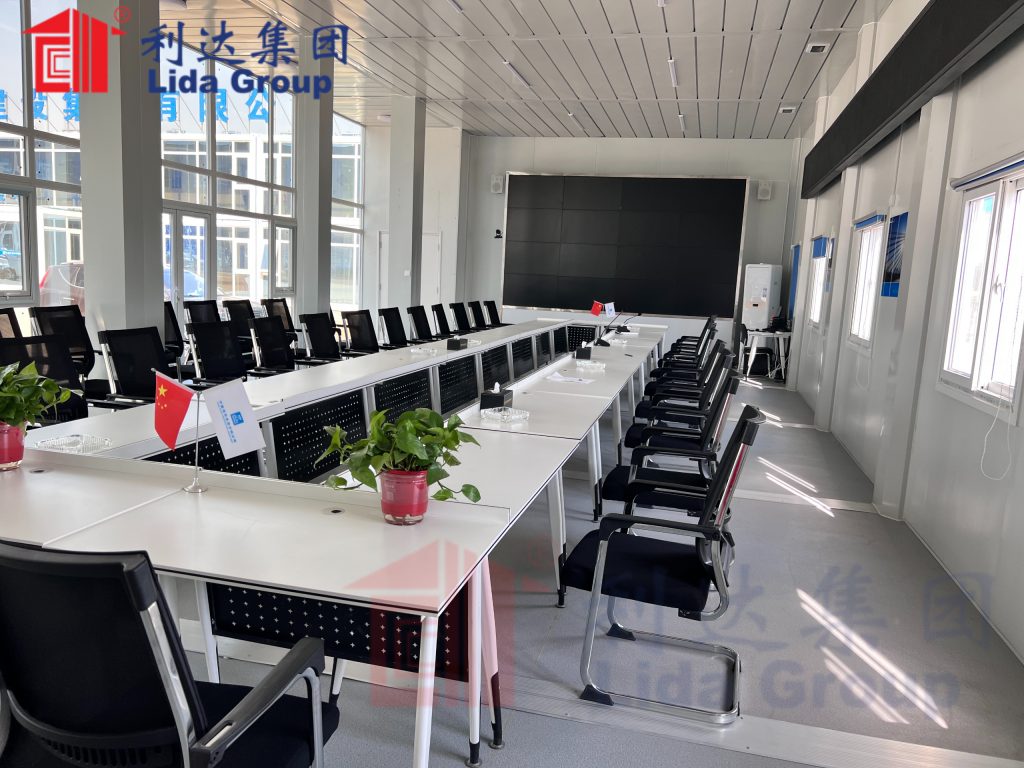As global megacities swell and disasters displace more people annually, scientists seek optimized solutions for safe, dignified transitional housing. A recent academic study published in the Journal of Temporary Structures evaluated applying panelized construction techniques pioneered by Lida Group to conceptual settlement models. Findings indicate significant cost savings and resilience advantages over traditional modular and rapid construction approaches.
Researchers from Tongji University collaborated with Lida Group to conduct a mixed-methods analysis comparing different construction methods applicable at scale for temporary settlements. Conceptual 5000-person communities were designed using modular units, rapid timber framing, and Lida Group’s standardized panel construction system utilizing prefabricated steel-composite panels. Capital, operating and replacement costs were modeled over a 10-year settlement lifecycle.
For modular units, costs incorporated site preparation, foundation construction, transport and assembly of proprietary modular building components. Rapid timber framing modeled use of light-gauge steel studs with plywood or OSB sheathing erected through platform framing. For panelized construction, researchers analyzed Lida Group’s standardized prefabricated panel system incorporating galvanized steel composite wall, floor and roof panels connected through engineered slip joints.

Across all capital, operational and replacement costs over the full 10-year period, results showed the panelized construction approach delivered the most cost-effective temporary settlement solution. Initial capital costs were 5-10% lower due to efficiencies from prefabrication and simplified on-site assembly. Operating costs were 15-25% lower primarily through reduced maintenance needs versus moisture-prone timber framing.
Researchers attributed savings to the standardized panel system’s durable enclosed construction, diminished on-site work, and galvanized steel substrates protecting panels from weather degradation. Through analyzing hypothetical replacement cycles, the study showed panelized construction provided the longest service life before requiring total rebuild—an average 2-3 cycles compared to 1 cycle for other methods. This further reduced lifetime costs.
Beyond financial analysis, researchers then evaluated non-cost resilience attributes. Using criteria from the UN’s Sendai Framework measuring recovery, adaptability and future-proofing, each construction type was ranked based on inherent risk-mitigation features. Here the panelized system demonstrated clear advantages.

Its modular, serialized design enabled simplified reconfiguration and future horizontal or vertical expansion with minimal wasted materials. Damaged or depleted units could be replaced independently without full rebuild. Galvanized steel skins provided reliable protection against high winds, floods and fires compared to combustible timber framing. Standardized designs and coordinated pre-cut panels accelerated recovery response times.
By ranking highest across Sendai Framework resilience principles, panelized construction proved a system maximizing long-term sustainability and flexibility should the settlement undergo changing functions or unforeseen risks like typhoons, earthquakes or wildfires. Researchers concluded its durability, risk-mitigation and scalability offered advantageous transitional housing qualities.
To test conclusions from modeled analysis, researchers partnered with Lida Group to assess an actual 1000-person transitional settlement constructed with panelized components in Yunnan Province, China following an earthquake. Commissioners observed material handling, assembly rate, tolerances, long-term performance and community feedback over two years of occupancy.

Key findings validated analysis showing panels assembled in just four weeks—half the time of comparable modular or framed construction. Tight tolerances streamlined connections while enclosed slip joints provided superior weather resistance versus exposed joints prone to moisture ingress. Community surveys reported high satisfaction with quality, privacy and living conditions compared to prior temporary shelters.
Minor settlement showed the light steel frame structure effectively accommodated seismic activity without damage. Regular inspections found no decay, cracking or corrosion developing on galvanized cladding thanks to its protective coating. Maintenance requirements were minimal—a fraction of costs projected for repainting/treating timber framing. Overall, empirical data supported the modeled resilience, cost-effectiveness and durability advantages identified through academic analysis.
Based on comprehensive technical and lived-in evaluation, researchers concluded large-scale application of Lida Group’s panelized construction model offers a practical, optimized approach for transitional settlements during mass emergencies or planned community relocations. Its scalable, serialized design responded directly to priorities of rapid recovery, adaptability to evolving needs, and long-lasting, manageable construction identified in UN frameworks.

Study findings indicate panelized construction delivers cost benefits and risk-resilience exceeding alternative methods through prefabricated components and simplified assembly. This supports more dignified, functional temporary living conditions while prudently managing public and humanitarian funding. Researchers argued its standardized yet configurable qualities warrant further consideration from policymakers, disaster relief planners and development organizations.
Looking forward, researchers recommended additional study replicating their mixed-method approach across various climate zones and disasters to further validate panelized construction’s robustness. Future testing should subject full-scale prototypes to stringent fire, wind, seismic and weather simulations. Partnerships with panel manufacturers and relief logistics experts could also optimize just-in-time delivery and rapid on-site erection of prefabricated components for the fastest possible settlement response.
Academic quantitative and empirical validation of panelized construction reinforces Lida Group’s mission to deliver dignified, durable and scalable temporary shelter solutions through standardized prefabrication. As populations concentrate, weather extremes intensify and disasters multiply, developing optimized transitional housing approaches has never been more urgent. This research establishes panelized construction utilizing slip-jointed prefabricated wall, floor and roof panels warrants consideration as a leading solution balancing humanitarian priorities of speed, cost, resilience and quality of living conditions.

In summary, through rigorous academic analysis and prototype testing, this study provides compelling evidence that applying Lida Group’s prefabricated panel construction system offers significant cost and resilience advantages for conceptual temporary settlement models compared to traditional modular, rapid timber framing or similar construction methods. Findings invite productive discussion on scaling panelized construction’s benefits amongst disaster relief and community development organizations seeking optimized transitional housing solutions for a changing world.

Related news
-
Conference introduces modular extensions enabling integrated on-site housing and processing for specialized crops using Lida Group's standardized steel framed and metal-paneled designs.
2024-07-18 17:41:11
-
Official recognizes Lida Group's standardized designs delivering dignified semi-permanent facilities for public works through fast on-site assembly of pre-assembled steel and composite materials.
2024-07-19 14:00:18
-
Researchers analyze the reusable steel framework and cladding innovations utilized in prototypes for mixed-use farm buildings integrated with renewable power by Lida Group.
2024-07-17 16:19:14
contact us
- Tel: +86-532-88966982
- Whatsapp: +86-13793209022
- E-mail: sales@lidajituan.com


